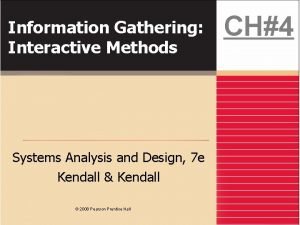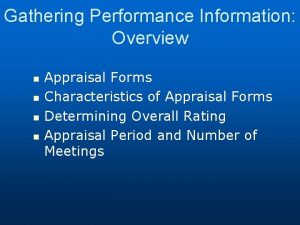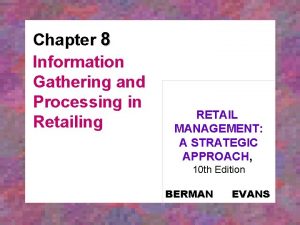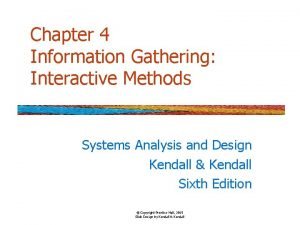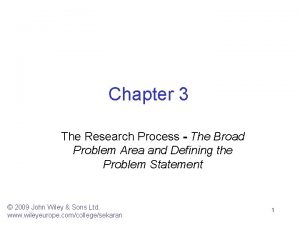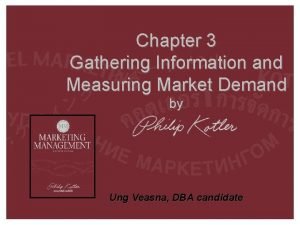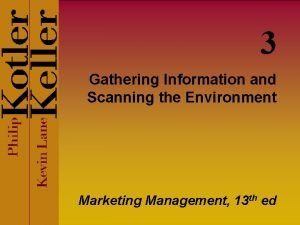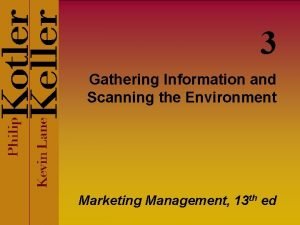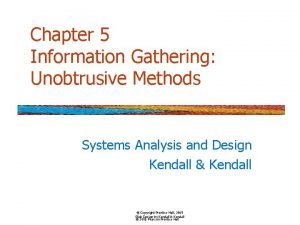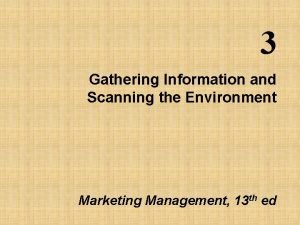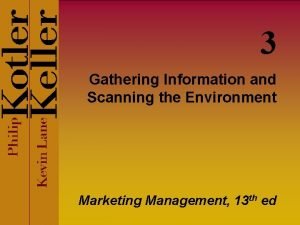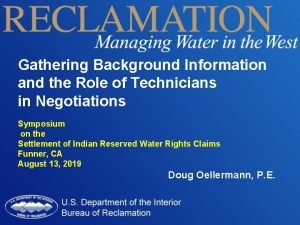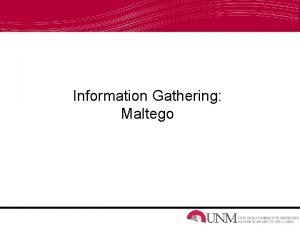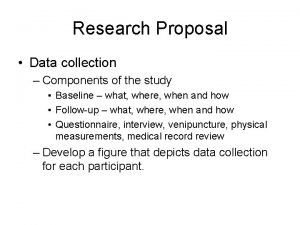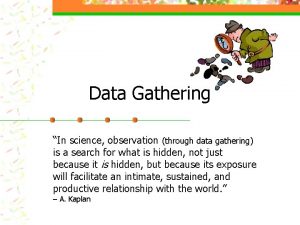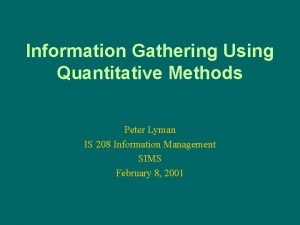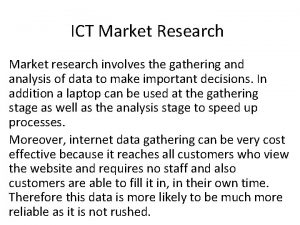How to Research Gathering information using the school
































- Slides: 32

How to Research Gathering information using the school and state library resources…

Choosing a Topic n n n n n Society’s Biggest Problem Choose something that you are passionate about Environmental Issues The War in Iraq The Deficit Healthcare Social Security National Security Violence in the media Poverty

Step 1 on Researching n n n Go to the Parker School District’s Homepage… On the left hand side, click on the for Student Section Select “software & research tools

Software & Research Tools n Find the South Dakota State Library Link and click on it.

Select State Library from the choices… n Select the picture of the person reading that says “For Library and School Users”

Choices… These offer the best selections on literature and resources available. These four databases are the first place you should look for information.

At home… n n Barcode: 21583000061549 Password: Parker You will need this information to access these databases from home.

DON’T FORGET!!! n n n To write down or save the source information for each article you find… The snipped bit below gives you all the information you will need to put in your works cited… When you insert each article into One. Note, make sure that the source information is also included…





n n n Article 1 of 1 save The Columbia Encyclopedia, Edition 6, 2000 p 15571 global warming. Full Text: COPYRIGHT 2000 Columbia University Press global warming, the gradual increase of the temperature of the earth's lower atmosphere as a result of the increase in greenhouse gases since the Industrial Revolution. The temperature of the atmosphere near the earth's surface is warmed through a natural process called the greenhouse effect. Visible, shortwave light comes from the sun to the earth, passing unimpeded through a blanket of thermal, or greenhouse, gases composed largely of water vapor, carbon dioxide, methane, nitrous oxide, and ozone. Infrared radiation reflects off the planet's surface toward space but does not easily pass through thermal blanket. Some of it is trapped and reflected downward, keeping the planet at an average temperature suitable to life, about 60°F (16°C). Growth in industry, agriculture, and transportation since the Industrial Revolution has produced additional quantities of the natural greenhouse gases plus chlorofluorocarbons and other gases, augmenting thermal blanket. It is generally accepted that this increase in the quantity of greenhouse gases is trapping more heat and increasing global temperatures, making a process that has been beneficial to life potentially disruptive and harmful. During the past century, the atmospheric temperature has risen 1. 1°F (0. 6°C), and sea level has risen several inches. Some projected, longer-term results of global warming include melting of polar ice, with a resulting rise in sea level and coastal flooding; disruption of drinking water supplies dependent on snow melts; profound changes in agriculture due to climate change; extinction of species as ecological niches disappear; more frequent tropical storms; and an increased incidence of tropical diseases.

n n n Among factors that may be contributing to global warming are the burning of coal and petroleum products (sources of carbon dioxide, methane, nitrous oxide, ozone); deforestation, which increases the amount of carbon dioxide in the atmosphere; methane gas released in animal waste; and increased cattle production, which contributes to deforestation, methane production, and use of fossil fuels. Much of the debate surrounding global warming has centered on the accuracy of scientific predictions concerning future warming. To predict global climatic trends, climatologists accumulate large historical databases and use them to create computerized models that simulate the earth's climate. The validity of these models has been a subject of controversy. Skeptics say that the climate is too complicated to be accurately modeled, and that there are too many unknowns. Some also question whether the observed climate changes might simply represent normal fluctuations in global temperature. Nonetheless, for some time there has been general agreement that at least part of the observed warming is the result of human activity, and that the problem needs to be addressed. In 1992, at the United Nations Conference on Environment and Development, over 150 nations signed a binding declaration on the need to reduce global warming. In 1994, however, a UN scientific advisory panel, the Intergovernmental Panel on Climate Change, concluded that reductions beyond those envisioned by the treaty would be needed to avoid global warming. The following year, the advisory panel forecast a rise in global temperature of from 1. 44 to 6. 3°F (0. 8 -3. 5°C) by 2100 if no action is taken to cut down on the production of greenhouse gases, and a rise of from 1 to 3. 6°F (0. 5 -2°C) even if action is taken (because of already released gases that will persist in the atmosphere). A UN Conference on Climate Change, held in Kyoto, Japan, in 1997 resulted in an international agreement to fight global warming, which called for sharp reductions in emissions of industrial gases. Not all industrial countries immediately signed or ratified the treaty, however, and obstacles to its implementation remain. Improved automobile mileage, reforestation projects, energy efficiency in construction, and national support for mass transit are among relatively simpler adjustments that could significantly lower U. S. production of greenhouse gases. More aggressive adjustments include a gradual worldwide shift away from the use of fossil fuels, the elimination of chlorofluorocarbons, and the slowing of deforestation by restructuring the economies of developing nations. Bibliography See P. Brown, Global Warming: Can Civilization Survive? (1997); T. G. Moore, Climate of Fear: Why We Shouldn't Worry about Global Warming (1998); S. G. Philander, Is the Temperature Rising? : The Uncertain Science of Global Warming (1998); K. E. Ready, GAIA Weeps: The Crisis of Global Warming (1998); G. E. Christianson, Greenhouse: The 200 -Year Story of Global Warming (1999).

Works cited for this article “Global Warming. ” The Columbia Encyclopedia. 6 th Edition. 2000. (“Global Warming” 15571)

Causes Science behind it & emission of gases n n global warming- ongoing raise in temp of the earth's lower atmosphere Rise in greenhouse gases-Industrial Revolution. Temp of atmosphere near surface of earth-warmed=greenhouse effect Shortwave light f/sun-comes in through greenhouse gases then infrared radiates off surface of earth to outer space -BUT can’t get out, trapped-bounces back to earth=rise in temp n Results n n n n n Why are there more greenhouse gases? Bigger industries, more transportation, since industrial revolution or the beginning of factories. I More greenhouse gases =more being trapped=higher heat. atmospheric temps-risen 1. 1°F (0. 6°C), sea level-risen several inches. Projected results of global warming -melting of polar ice=rise in sea level & coastal flooding drinking water supplies upset Significant changes in agriculture extinction of species more tropical storms More tropical diseases

Causes-deforestation & emission of gases. n n burning of coal and petroleum products (sources of carbon dioxide, methane, nitrous oxide, ozone); Deforestation-increases the amount of carbon dioxide in the atmosphere; methane gas released in animal waste; and increased cattle production, which contributes to deforestation, methane production, and use of fossil fuels. n Results-warming n planet By 2100 if nothing’s done we could see a rise from 1 to 3. 6°F (0. 5 -2°C)

n n Article 1 of 8 save World Almanac and Book of Facts, Annual 2007 p 270(1) Global warming: surprising sources of methane. (Report)(Brief article) Maura C. Flannery. Full Text: COPYRIGHT 2007 World Almanac Education Group Land plants may emit as much as 30% of the world's atmospheric methane, according to a team of geochemists led by Frank Keppler from the Max Planck Institute. Keppler and his team found that living plants naturally generate methane, which may be a by-product of plants' regular metabolic cycle. Previously, anaerobic microorganisms and ruminant animals (such as cows) were thought to be the most important biological producers of the greenhouse gas. The findings may provide insight into many unexplained natural phenomena, such as the high concentrations of methane observed in the air over tropical rain forests. In addition, these results may force scientists to reconsider the role of plant-generated methane in past climate change. [Nature, Jan. 12] A team of scientists led by biogeochemist Katey Walter from the University of Alaska Fairbanks have found that carbon, which had been trapped in permafrost under Siberian lakes since the Pleistocene epoch (about 40, 000 years ago), is being released in the form of methane as the permafrost melts, The team measured the amount of methane being released in two Siberian lakes by measuring gas collected by "bubble traps" placed beneath the surface of frozen lake ice, which caught methane bubbling from the lake bottoms. Using historical area data, researchers found that methane emissions in the area increased 58% between 1975 and 2000; they warn that as global warming causes more permafrost under northern lakes to melt, emissions of methane from this source may further exacerbate the problem. [Nature, Sept. 7]

Works Cited Flannery, Maura C. . “Global warming: surprising sources of methane. ” World Almanac and Book of Facts. Annual 2007. (Flannery 270)

n n n n n Article 1 of 175 save The Christian Science Monitor, August 27, 2008 p 9 The greatest failure of thought in human history. (OPINION)(Viewpoint essay) Bob Doppelt. Full Text: COPYRIGHT 2008 The Christian Science Publishing Society Byline: Bob Doppelt Eugene, Ore. -- "Cap and trade" is the rage today as a primary solution to global warming. But the European Union's struggle with this approach indicates it has an uncertain future. This is because global warming, at its core, is not a technology or policy problem. It is the greatest failure of thought in human history. Attempts to reduce greenhouse-gas emissions will fail unless people first alter their thinking and behavior. Earth is warming because humans, primarily in industrialized nations, suffer from systems blindness. We have failed to recognize the effects of our insatiable use of fossil fuels, massive resource consumption, and huge emission of waste, including greenhouse gasses, on the ecological and social systems we depend on for life. That blindness threatens all life forms today and in the future. Overcoming systems blindness requires a shift to what can be called "sustainable thinking. " A growing number of private and public organizations and everyday citizens have shown that it is possible to think sustainably. They use a four-step process: discover, dream, design, and act. Their first step is to discover the greenhouse gas emissions produced through all aspects of their activities. They start by assessing the emissions directly produced through their home and business energy use, travel, and waste. They then identify the emissions they create indirectly, including those generated throughout the entire life cycle of the goods and services, including food, purchased or used. Discovery is often a life-changing experience. People become aware of the profound impacts of their activities on the climate and other people.

n n n Albuquerque, N. M. , and Portland, Ore. , have completed greenhouse-gas "inventories" of the amount and sources of emissions generated directly through internal city operations and by the broader community. Some cities have begun to assess the emissions from products manufactured elsewhere that are used locally. Xerox and Du. Pont are just two of the many private companies that use "life-cycle assessments" to quantify their carbon footprint. Regular people are also doing it, such as those that attend the Climate Master program developed by my organization at the University of Oregon. Through this 10 -week program, participants are taught how to think systemically and discover the full range of their emissions. Small towns such as Corvallis, Ore. , big cities such as Denver, and individual groups in Maryland are now considering launching Climate Master programs. The next step is to dream of new ways to lower our carbon footprint. Dreaming starts by envisioning what an ideal low or carbon-free condition would look and function like. Dreaming leads to the design stage, where innovative ways of achieving the ideal are planned. Albuquerque established the nation's first municipal capital budget set-aside specifically dedicated to energy reduction and renewable energy projects. Portland developed a climate action plan through extensive community involvement. Xerox established the "Energy Challenge 2012, " which involves the entire company, engages its full business value chain, and integrates climate protection into core business strategies and practices. The last stage is acting. Start by increasing energy conservation and efficiency. Make behavioral changes - such as turning off unused lights, TVs, and computers - routine. Add extra building insulation. Use public transportation or walk more. Install green technologies, from CFL or LED bulbs to more efficient motors. After all possible efficiencies have been captured, shift to renewable energy. In Portland, more than 40 high-performance green buildings have been constructed and more than 10, 000 multifamily units and 800 homes have been weatherized. Albuquerque now gets 20 percent of its energy from wind. Thinking sustainably produces impressive results. Emissions from city operations in Albuquerque have been reduced by 58 percent; Portland's have dropped 16 percent since 1990, Xerox's by 18 percent through 2006, and Du. Pont's by 67 percent. Climate Masters has slashed emissions by an average of two tons person. Hundreds of other organizations are beginning to think sustainably. The State of Florida, for example, recently completed a statewide emissions assessment. More than 850 mayors have signed the US Mayors Climate Protection Agreement that, among other actions, commits cities to inventory their emissions. IBM and Bayer have each reduced emissions by at least 60 percent since the early 1990 s, collectively saving more than $4 billion. Stabilizing the climate will ultimately require an 80 percent cut in emissions, so emissions trading and many other reduction strategies will be needed. But, no matter what the approach, these pioneers have shown that success ultimately depends on overcoming systems blindness and thinking sustainably. * Bob Doppelt is director of the Climate Leadership Initiative at the University of Oregon, writes a global warming column for two Oregon newspapers, and is the author of "The Power of Sustainable Thinking: How to Create a Positive Future for the Climate, The Planet, Your Organization and Your Life. " (c) Copyright 2008. The Christian Science Monitor

Summarize Article-take notes Solutions-eco-conscious lifestyle n n n Fate of the world is our responsibility We are ignorant to the problems Need "sustainable thinking. " using a four-step process: discover, dream, design, and act. first -discover greenhouse gas emissions produced in all activities. T Assess the emissions directly produced through home and business energy use then identify the emissions created indirectly Discovery -often a life-changing experience b/c of the impact of their activities on the climate, themselves & others Albuquerque, N. M. , and Portland, Ore. , did greenhouse-gas "inventories" - amount & sources of emissions Xerox & Du. Pont use "life-cycle assessments" to calculate their emissions Regular people too Climate Master program developed by University of Oregon. Through 10 -week program, taught how to understand the full range of their emissions. Dream of new ways to reduce emissions

Works Cited n n Doppelt, Bob. “The Greatest Failure of Thought in Human History. ” The Christian Science Monitor. August 2008. (Doppelt 9) How can you tell it is an opinion article? Is it credible?

n n n n Article 1 of 4757 save Japan Times (Tokyo, Japan), Oct 8, 2008 p. NA EDITORIAL: Beyond the Kyoto Protocol. (Editorial) Full Text: COPYRIGHT 2008 Japan Times Oct. 8 --One of former Prime Minister Yasuo Fukuda's notable achievements was when, as the chair of the Group of Eight summit this summer, he managed to get the G 8 nations to broadly agree on efforts to fight global warming. Although the government has changed, Japan must strive with other countries to overcome individual national interests and create a pact to succeed the Kyoto Protocol. The G 8 leaders agreed to consider and adopt, together with all parties to the United Nations Framework Convention on Climate Change, the goal of achieving at least a 50 percent reduction of global emissions by 2050, but they did not mention specific medium-term national targets for 2020 or 2030. The Intergovernmental Panel on Climate Change thinks that to minimize the effect of global warming it is indispensable for industrialized nations to slash their emissions by 25 to 40 percent by 2020 from 1990 levels. It also calls for halving global emissions by 2050 from 2000 levels. The G 8 summiteers met with the leaders of eight other major economies -- Brazil, China, India, Mexico, South Africa, Indonesia, South Korea and Australia. Although the 16 nations agreed that "deep cuts in global emissions" will be necessary to achieve the UNFCCC's objective, they failed to set any numerical target for emission cuts. To overcome the differences, developed countries, which emitted a large amount of greenhouse gases in the past, should firmly commit themselves to deep cuts to induce developing countries to join reductions efforts. The UNFCCC parties are to produce a post-Kyoto Protocol pact in Copenhagen in December 2009. Instead of following other countries' initiative, Japan should set an ambitious goal for itself and start taking concrete actions. Mr. Fukuda suggested that Japan increase its solar power generation capacity 10 times by 2020 and 40 times by 2030. But this should be a part of larger efforts to develop technologies to realize a low-carbon society. Serious efforts should be made to achieve a technological breakthrough that will greatly reduce emissions or eliminate emissions without producing hazardous wastes. To see more of the Japan Times or to subscribe to the newspaper, go to http: //www. japantimes. co. jp/. Copyright (c) 2008, Japan Times, Tokyo Distributed by Mc. Clatchy-Tribune Information Services. For reprints, email tmsreprints@permissionsgroup. com, call 800 -374 -7985 or 847 -635 -6550, send a fax to 847 -635 -6968, or write to The Permissions Group Inc. , 1247 Milwaukee Ave. , Suite 303, Glenview, IL 60025, USA.

Summarize Article-take notes Solutions-agreements n n n Kyoto Protocol-treaty to have a 50 percent reduction of global emissions by 2050, No national targets for 2020 or 2030. To lessen global warming-big industries need to cut their emittions-25 -40% Japan should set an ambitious goal for itself and start taking concrete actions-increase solar energy Need tech breakthroughs for reduction of emissions

Works Cited n “Beyond the Kyoto Protocol. ” Japan Times. 8 Oct 2008. n (“Beyond the Kyoto Protocol” NA)

n n n Africa News Service, Oct 15, 2008 p. NA World Food Day - Climate Change and Bio-Energy - Will Africa Survive? [column]. (Column) Full Text: COPYRIGHT 2008 Africa News Service. News Provided by Comtex. Byline: Kelvin Odoobo Kigali, Oct 15, 2008 (The New Times/All Africa Global Media via COMTEX) -- For many years, scientists have advanced evidence that climate change is a very serious challenge to the survival of man on earth. But because the major culprits are the main players in world trade and have a decisive stake in international policy-making, the campaign against climate change, especially global warming was reduced to arguments of whether or not climate change is a result of human causes. In recent years the likes of El-Nino in Africa, the heat wave in Europe, the more violent hurricane season in the Americas and Asia; including the increased rate of melting ice at the poles. A consensus emerged that man needs to curb green-house emissions in order not to make his habitat inhabitable has progressively began to gain steam. The theme of this year's World Food Day, "World Food Security: the Challenges of Climate Change and Bio-energy" has raised questions not only on issues of global warming but also on the other elephant in the room, the impact of the decision to go bioenergy at the expense of food production. The FAO Initiative of Soaring Food prices, which resulted from The High-Level Conference on World Food Security at FAO Headquarters held last June in Rome, Italy; is working primarily with small farmers to ensure the success of the next planting season, in the short term and to increase food production through improved seeds and fertilizers in the long term. "Hundreds of millions of small-scale farmers, fishers and forest-dependent people will be worst hit by climate change, " said Alexander Mueller, FAO Assistant Director-General for Natural Resources Management and Environment Department. "Adaptation strategies, especially for the most vulnerable poor countries, where most of the over 920 million hungry people live, need to be urgently developed, reviewing land use plans, food security programmes, fisheries and forestry policies to protect the poor from climate change. "

n n n n In the wake of the soaring food prices, the poor people in the developing world who ironically contribute the least of the green house emissions that are responsible for climate change are suffering the most. Although some countries in the developing world like Brazil are among the countries that have pioneered the development of bioenergy as a viable solution to the overuse of fossil fuels and consequently the production of green house gases, the fact remains that chief polluters like the US, under the guise of developing cleaner energy forms have instead shifted massive resources away from food production hence denying food for many developing countries, most of which are in Africa. According to a research paper, effects of climate change on global food production under SRES emissions and socio-economic scenarios, "While global production appears stable, regional differences in crop production are likely to grow stronger through time, leading to a significant polarization of effects, with substantial increases in prices and risk of hunger amongst the poorer nations, especially under scenarios of greater inequality. " So the threats of climate change are a boon to food security especially in poor countries that cannot leverage these effects with improved technology and production methods. A study released by the Center for Global Development in October 2007, shows that climate change could cause global food production to decline from 5 to 20 percent by the year 2080, and even higher in some countries, according to Voice of America. "Something like 30 to 40 percent in India for example, and something like 20 percent or more in Africa and Latin America, " said study author William Cline. According to Dr Gina Ziervogel, senior researcher at the Climate Systems Analysis Group at the University of Cape Town, many factors influence food security, which means that often "the link is not even made between failed crops and changing weather patterns. Changing weather patterns or extreme weather events, such as floods or droughts, can have negative consequences for agricultural production.

n n n As a result people have less access to food, which forces them to buy food products. This affects their financial situation. It also influences their health as people often buy cheaper food which is frequently less nutritious. Especially for those who need a nutritious diet - the chronically ill, for instance - this poses a problem, " Ziervogel told the Mail and Guardian Online, in July this year. The links between climate change and reduction in food security are numerous but discreet. A general increase in temperatures can lead to a more severe attack by insect pests, just as the fish stocks in the water will decline with an increase in temperatures and the rate of evaporation hence causing a decline of water levels in water bodies. According to the Science and Development Network, the International Food Policy Research Institute (IFPRI) has projected prices of biofuels for two potential scenarios up to the year 2020. In both scenarios, increasing crop prices go hand in hand with decreasing availability of and access to, food. Poor people spend a much bigger share of their budgets on food than they do on energy, about 50 -70 per cent on food and 1 -10 per cent on energy. With high prices, they are likely to spend less on food, exacerbating poor diets and micronutrient malnutrition. Calorie consumption decreases the most in Sub-Saharan Africa, where scenario two projects that food availability could fall by more than eight per cent by 2020. The individual impacts of bio-fuels and climate change on food security in Africa and the developing world are grave enough, but if the world does not take concrete steps to minimize the impact on the world's poor people, we will see a multiple rather than a sum total of the two effects on food security. Considering that Africa does not use considerable amounts of fossil fuels and that the sole motivation to move away from fossil fuels to biodiesel is not necessarily to curb its greenhouse emissions, but to find a cheaper alternative source of fuel, this year's World food Day theme is a relevant signal to the direction policy makers should be taking. It is important to curb greenhouse emissions and explore sources of bioenegy in Africa. However, if we do not find a way of enforcing relevant restrictions on the use of food grains for bio-fuel production and advocate for the reduction of emissions among the economic powers of the world while making gradual but steady steps in increasing our own food production. . Then we might as well be consigning the future generations in Africa to regular famine and constant malnutrition. Copyright The New Times. Distributed by All. Africa Global Media (all. Africa. com).

Notes: Results-Food Availability n n n Major Disasters-caused by global warming-El-Nino in Africa, the heat wave in Europe, the more violent hurricane season in the Americas and Asia; including the increased rate of melting ice at the poles. small-scale farmers, fishers and forest-dependent people-hit hardest by climate change People in poor countries are most vulnerable b/c it’s here where 920 million hungry live. Food prices-keep soaring-people in developing countries suffer Threats of climate change =threat to food security in poor countries b/c they can’t produce the technology to produce food with bioenergy, which is the what we need to do to reduce greenhouse emissions. Center for Global Development-October 2007 -climate change could cause global food production to decline from 5 to 20 percent by the year 2080, and even higher in some countries. "Something like 30 to 40 percent in India for example, and something like 20 percent or more in Africa and Latin America, " said study author William Cline. Changing weather patterns, extreme weather events-floods or droughts= neg. results for agricultural production. = increase in food prices increase in temps= severe attacks by insect pests fish stocks in water will decline with an increase in temperatures the rate of evaporation will increase causing a decline of water levels in water bodies.

Results Weather patterns & Food shortages n n n n 10 million environmental refugees today Projected sea-level rise worldwide of approximately 8 -29 cm; 18 cm by 2030; 25 -110 cm by 2100; 2050 is 30 cm, Bangladesh April 1991 -cyclone struck the country's coast & six-meter-high storm = 200, 000 people dead more than ½ of Bangladesh lies less than 5 m above sea level=susceptible to sea-level rise Bangladesh is also highly susceptible to flooding inland, again because of its low-lying territory. Egypt River Nile supports a 10 -kilometer-wide strip of farmlands In this area live 57 million people, In a greenhouse-affected world-drier conditions will cause a one-fifth drop in the corn yield and a one-third drop in the wheat yield Food shortages-rise If sea-levels rise= permanent flooding of agricultural lands. a result of sea-level rise, coastal protection costs worldwide could be b/w $2. 5 trillion to $5. 0 trillion coastal land loss-$15 trillion http: //infotrac. galegroup. com/k 12/infomark/583/4/45861801 w 16/purl=rc 1_K 12 S_0_A 14841609&dyn=20!xrn_2_0_ A 14841609? sw_aep=sdln_sds

Citations n n Myers, Norman. “Environmental Refugees in a globally warmed world. ” Bio. Science. Dec 1993 v 43 n 11 (Myers 752)
 Information gathering interview questions
Information gathering interview questions Gathering performance information
Gathering performance information Information gathering and processing in retailing
Information gathering and processing in retailing Gathering performance information
Gathering performance information Information gathering: interactive methods
Information gathering: interactive methods Forecasting and demand measurement in marketing
Forecasting and demand measurement in marketing Broad problem
Broad problem Gathering information and measuring market demand
Gathering information and measuring market demand Gathering information and scanning the environment
Gathering information and scanning the environment Informasi pemasaran
Informasi pemasaran Gathering information and scanning the environment
Gathering information and scanning the environment Unobtrusive methods of information gathering
Unobtrusive methods of information gathering Gathering information and scanning the environment
Gathering information and scanning the environment The action or activity of gathering information
The action or activity of gathering information Gathering information and scanning the environment
Gathering information and scanning the environment Gathering background information
Gathering background information Gathering background information
Gathering background information Maltego information gathering
Maltego information gathering Data collection instruments in qualitative research
Data collection instruments in qualitative research Data gathering procedure in research example
Data gathering procedure in research example Data collection procedure in research proposal
Data collection procedure in research proposal Hình ảnh bộ gõ cơ thể búng tay
Hình ảnh bộ gõ cơ thể búng tay Lp html
Lp html Bổ thể
Bổ thể Tỉ lệ cơ thể trẻ em
Tỉ lệ cơ thể trẻ em Voi kéo gỗ như thế nào
Voi kéo gỗ như thế nào Tư thế worm breton là gì
Tư thế worm breton là gì Hát lên người ơi
Hát lên người ơi Các môn thể thao bắt đầu bằng tiếng chạy
Các môn thể thao bắt đầu bằng tiếng chạy Thế nào là hệ số cao nhất
Thế nào là hệ số cao nhất Các châu lục và đại dương trên thế giới
Các châu lục và đại dương trên thế giới Công thức tính thế năng
Công thức tính thế năng Trời xanh đây là của chúng ta thể thơ
Trời xanh đây là của chúng ta thể thơ
